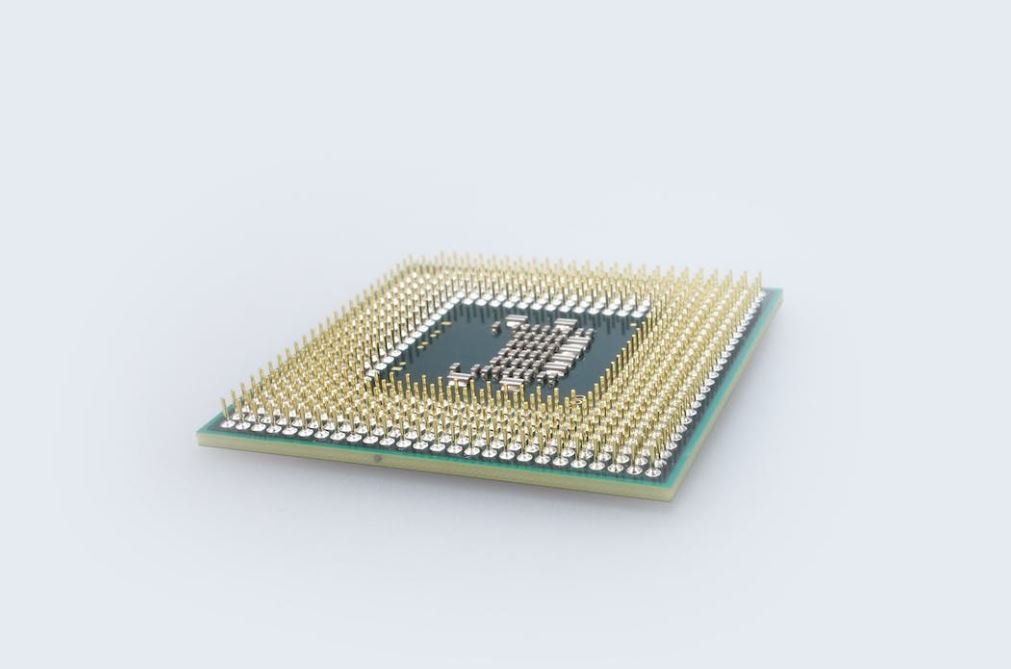5 Generation Language of Computer
Computers have evolved significantly over the years, progressing through various generations as technology advances. Each generation brings new features and capabilities that improve the performance and functionality of computers. In the world of computer programming, there are different generations of programming languages that have been developed to interface with these computers. Let’s explore the 5 generations of computer languages and understand their significance.
Key Takeaways:
- Computer languages have evolved through five generations.
- Each generation represents advancements in programming concepts and capabilities.
- Higher-level languages allow for more abstraction and ease of programming.
- Machine language is the lowest-level language understood by computers.
- Each generation builds upon the previous generation’s concepts and limitations.
1. First Generation (Machine Language)
The first generation of computer languages, known as machine language, is the lowest-level programming language understood by computers. It consists of a series of binary instructions, represented by 0s and 1s, directly executed by the computer’s hardware. *Machine language is highly dependent on the specific hardware architecture of the computer system.*
2. Second Generation (Assembly Language)
In the second generation, assembly language was introduced as a more readable and mnemonic representation of machine language instructions. It uses symbols and short codes to represent individual instructions and memory addresses. *Assembly language allows programmers to write instructions specific to a particular computer architecture, providing direct control over the hardware.*
3. Third Generation (High-Level Language)
The third generation of computer languages introduced high-level languages. These languages use English-like statements and mathematical notations to write programs. *High-level languages provide abstraction from the underlying hardware and offer a more user-friendly programming experience.* They are designed to be portable and platform-independent, enabling code to be run on different computer systems.
Some popular examples of third-generation languages include:
- C
- Fortran
- COBOL
- Java
- Python
4. Fourth Generation (Domain-Specific Language)
The fourth generation of computer languages focuses on domain-specific languages (DSL). These languages are designed for specific applications or domains and provide a higher level of abstraction. *DSLs allow for concise and specialized code to solve specific problems within a particular field or industry.* They are often used in database management, data analysis, and web development.
Some examples of fourth-generation languages include:
- SQL (Structured Query Language)
- HTML (Hypertext Markup Language)
- CSS (Cascading Style Sheets)
- Matlab
- R
5. Fifth Generation (Artificial Intelligence Language)
The fifth generation of computer languages focuses on artificial intelligence (AI) and advanced programming paradigms. These languages enable programmers to create intelligent systems that can learn, reason, and make decisions. *Fifth-generation languages leverage concepts such as natural language processing and machine learning to build sophisticated AI applications.* Although still in development, these languages show promise in revolutionizing AI and automation.
Tables:
| Generation | Description |
|---|---|
| First | Machine Language |
| Second | Assembly Language |
| Third | High-Level Language |
| Fourth | Domain-Specific Language |
| Fifth | Artificial Intelligence Language |
Conclusion
Understanding the different generations of computer languages is essential for programmers to build efficient and innovative applications. From low-level machine language to advanced AI languages, each generation brings unique features and capabilities. By leveraging these languages, developers can push the boundaries of what computers can accomplish.

Common Misconceptions
Introduction
There are several common misconceptions regarding the concept of 5 Generation Language (5GL) in computer programming. While this advanced level of programming is often misunderstood, it is important to address these misconceptions to accurately understand and appreciate its true value and potential. Let’s explore some of the most common misconceptions associated with 5GL.
- 5GL is only suitable for expert programmers
- 5GL eliminates the need for lower level programming languages
- 5GL development is time-consuming and complex
Misconception 1: 5GL is only suitable for expert programmers
Contrary to popular belief, 5GL is not exclusively reserved for expert programmers. While 5GL may require a certain level of programming knowledge, it is designed to assist developers of varying skill levels. 5GL often includes visual programming and user-friendly interfaces, allowing even novice programmers to harness its power and capabilities.
- 5GL can be utilized by programmers at various skill levels
- Visual programming and user-friendly interfaces enhance accessibility
- Novice programmers can effectively employ 5GL concepts
Misconception 2: 5GL eliminates the need for lower level programming languages
Another misconception surrounding 5GL is the notion that it renders lower level programming languages obsolete. While 5GL offers high-level abstractions and simplifies complex tasks, it does not replace the need for lower level languages. In fact, 5GL often integrates and works in conjunction with lower level languages for optimal results, allowing developers to leverage the strengths of each language as required.
- Lower level languages complement and coexist with 5GL
- 5GL and lower level languages can be used together for optimal outcomes
- Coexistence allows leveraging the strengths of each language
Misconception 3: 5GL development is time-consuming and complex
Many people mistakenly assume that developing in 5GL is a time-consuming and complex endeavor. However, this is not the case. 5GL focuses on simplifying the development process and reducing the time required to create complex systems. With intuitive visual programming tools and pre-defined templates, developers can expedite the software development process in a streamlined manner.
- 5GL aims to simplify development and reduce time commitment
- Intuitive visual tools make the process more efficient
- Pre-defined templates allow for streamlined development

5 Generation Language of Computer
Computer programming languages have evolved over the years, each generation bringing new features and capabilities. This article explores the 5th generation languages (5GLs), which are known for their advanced level of abstraction. The tables below highlight various aspects and examples of 5GLs.
High-Level Abstraction Levels of 5GLs
| Generation | Abstraction Level | Focus |
|---|---|---|
| 1GL | Machine code | Hardware-specific instructions |
| 2GL | Assembly language | Low-level operations |
| 3GL | High-level language | Data and procedures |
| 4GL | Non-procedural language | Database queries |
| 5GL | Declarative language | Natural language-like instructions |
Characteristics of 5GLs
| Characteristic | Description |
|---|---|
| Declarative | Focuses on “what” rather than “how” to achieve a goal. |
| Natural language-like | Instructions resemble human languages, enhancing readability. |
| Efficient | Allows concise expression of complex operations, reducing code length. |
| Abstracts details | Hides implementation specifics, enabling higher-level problem-solving. |
| AI integration | Facilitates AI-driven applications through knowledge representation. |
Examples of 5GLs
| Language | Use Case |
|---|---|
| Prolog | Expert systems, automated reasoning |
| SABL | Process automation, decision support systems |
| Leda | Parallel programming, distributed systems |
| OPS5 | Rule-based systems, real-time control |
| Mercury | Functional programming, logical constraints |
Benefits of 5GLs
| Benefit | Description |
|---|---|
| Productivity | Enables faster development through increased abstraction. |
| Readability | Clear and expressive code improves understanding and maintainability. |
| AI-powered applications | Seamless integration with AI technologies enhances functionalities. |
| Reduced complexity | Abstracts complex operations, simplifying problem-solving. |
| Parallel processing | Designed for efficient execution on parallel computing architectures. |
Limitations of 5GLs
| Limitation | Description |
|---|---|
| Learning curve | May require time to grasp the concept and unique syntax of a specific 5GL. |
| Domain-specific | Not suitable for all types of programming tasks, limiting general-purpose usage. |
| Lack of control | Higher-level abstractions can restrict fine-grained control over execution. |
| Performance trade-offs | In pursuit of abstraction, some execution efficiency may be sacrificed. |
| Limited community | Smaller user base compared to mainstream languages may limit support resources. |
Development Tools for 5GLs
| Tool | Description |
|---|---|
| Visual Logic Environment | Graphical interface for visually designing 5GL programs. |
| Rule Editors | Facilitates the creation and modification of rule-based systems. |
| Knowledge Representation Tools | Supports representation and classification of knowledge in 5GL programs. |
| Parallelization Tools | Assists in optimizing 5GL programs for parallel processing environments. |
| Code Generators | Automatically generates code from 5GL specifications. |
Applications of 5GLs
| Industry | Use Case |
|---|---|
| Healthcare | Medical diagnosis systems, patient data analysis |
| Finance | Financial forecasting, fraud detection |
| Manufacturing | Supply chain management, predictive maintenance |
| Transportation | Route optimization, traffic prediction |
| Education | Intelligent tutoring systems, personalized learning |
5GLs provide an exciting paradigm for computer programming, enabling higher-level abstraction and natural language-like instructions. These languages, exemplified by Prolog, SABL, Leda, OPS5, and Mercury, offer benefits such as increased productivity, improved readability, and integration with AI technologies. However, they also have limitations, including domain-specific usage and potential performance trade-offs. With the use of dedicated development tools and applications in various industries, 5GLs continue to shape the future of software engineering and problem-solving.
Frequently Asked Questions
What is a 5th Generation Language of Computer?
A 5th generation language (5GL) is a computer programming language that has advanced natural language processing capabilities, making it easier for humans to communicate with computers. It aims to enable users to speak, write, or draw instructions in a more human-like manner, reducing the need for complex programming syntax.
How does a 5th Generation Language differ from other programming languages?
A 5GL differs from traditional programming languages, such as C++ or Java, in that it emphasizes a higher level of abstraction. It allows programmers to focus more on the problem-solving aspects of programming rather than worrying about the detailed implementation. 5GLs also often incorporate artificial intelligence and machine learning techniques for better understanding of human instructions.
What are the advantages of using a 5th Generation Language?
Using a 5GL can offer several advantages. First, it reduces the learning curve for programmers, as the syntax and structure of the language are more intuitive and closer to natural language. Second, it can lead to faster development cycles, as programming tasks become less complex and time-consuming. Lastly, 5GLs also promote code reusability and modularity, allowing for more efficient and maintainable software development.
Are there any limitations or drawbacks to using 5th Generation Languages?
While 5GLs have their benefits, they also have some limitations. Due to their higher level of abstraction, 5GLs may not be suitable for implementing low-level system tasks or highly performance-critical applications. They may also face challenges with hardware compatibility or performance optimization. Additionally, the availability of 5GL resources, such as libraries or support, may be limited compared to more established programming languages.
Can 5th Generation Languages be used for any type of software development?
5GLs can be used for a wide range of software development tasks, including web development, database programming, and artificial intelligence applications. However, their suitability depends on the specific requirements of the project and the available tools and resources in the chosen 5GL. It is important to assess the compatibility of the 5GL with the target platform and the complexity of the problem you intend to solve.
What are some examples of programming languages considered as 5th Generation?
Examples of 5GLs include Prolog, Lisp, OPS5, Mercury, and Conniver. These languages are designed to facilitate high-level problem-solving and often incorporate advanced features like logic programming, pattern matching, and rule-based systems. However, it’s worth noting that the categorization of programming languages into specific generations can be subjective and may vary across different sources.
How do 5th Generation Languages utilize natural language processing?
5GLs leverage natural language processing techniques to capture and interpret human-like instructions. This involves algorithms and methodologies that enable the processing of text or speech inputs, extracting meaningful information, and performing the corresponding actions based on the interpreted instructions. Through these techniques, programmers can express their intentions more naturally and intuitively.
Can 5th Generation Languages understand multiple natural languages?
Some 5GLs have been designed to understand and process multiple natural languages. They are equipped with language parsing and understanding capabilities, allowing programmers from different linguistic backgrounds to interact with the system using their preferred language. However, the level of language support may vary depending on the specific 5GL implementation and its underlying language processing capabilities.
How can I get started with programming in a 5th Generation Language?
To get started with programming in a 5GL, it is recommended to study the documentation and learning resources specific to the chosen language. Many 5GLs have their own dedicated websites, forums, and tutorials that provide information on syntax, features, and best practices. Additionally, experimenting with small projects or working on guided exercises can help familiarize yourself with the language and its capabilities.
Are there any industry applications of 5th Generation Languages?
Yes, 5GLs have been applied in various industry domains. Industries such as healthcare, finance, and manufacturing have utilized 5GLs to develop intelligent systems, automate complex processes, and enhance decision-making. They have also been used in natural language interfaces, expert systems, and other AI-driven applications. The potential applications of 5GLs continue to expand as natural language processing and artificial intelligence technologies advance.




